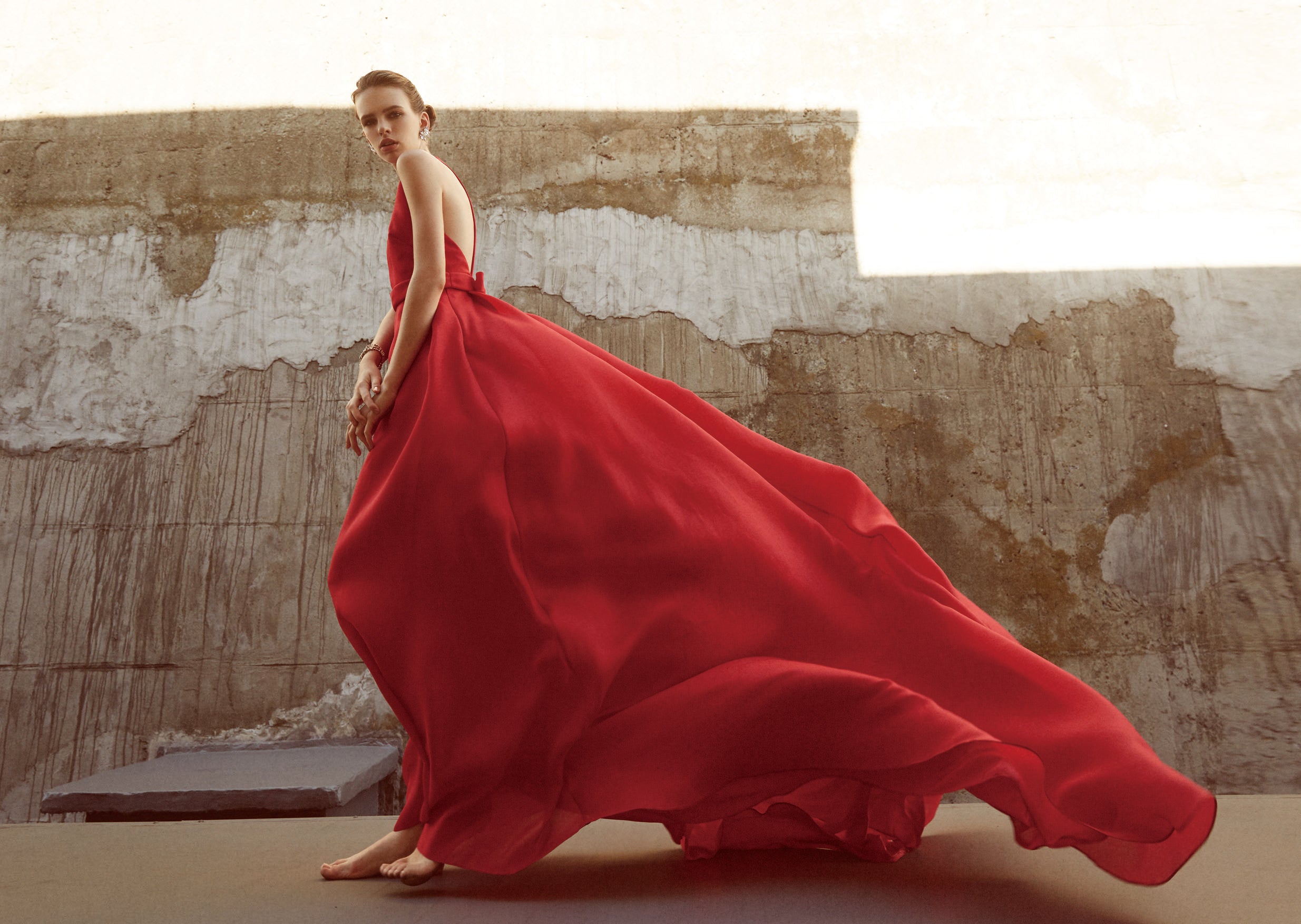
From blush to black and everywhere in between, brides are moving past pale to embrace gowns in unexpectedly vibrant hues. With reasons as diverse as the colors themselves, some prefer “anything BUT white”, while others gravitate to a favorite color. Predictably white (ivory, cream, etc.) bridal runways have also made space for vivid organza and lace. An impressively rainbow-toned runway body count shows this direction as a calculated move rather than happy accident.
Though it may seem a rejection of assumedly ancient social norms, today’s show of colored frocks hardly differs from the movement that brought white into bridal vogue less than 200 years ago. Just before the reign of Victoria number one, in fact, women rarely chose white for the big day. Rather, the romantic hue of red was a popular option. Oft-limited wardrobes and antiquated laundering methods meant the betrothed selected versatile and serviceable shades for gowns that would be worn years beyond the ceremony.
Beyond white’s high maintenance requirements, its then-association with mourning also sent superstitious pre-Victorian brides running for…(ahem)…color. Notorious 16th-century Mary Queen of Scots found her choice of bridal white akin to public relations poisoning, visiting her with a “morbid” label from less-than-adoring fans.
Ironically, it took a latter and slightly southward-situated queen—that of the Victorian kind--to nudge the Western world toward the concept of “bridal white”. Some 300 years after Mary’s fashion faux-pas, adored Queen Victoria wore white upon her 1840 nuptials to Prince Albert. Britain was enthralled with the emerging shade, and fashion magazines spread the word. In the years that followed, wallflower white took on modern-day associations with purity, 5-star hotels, and soothing summer months. As you can imagine, professional launderers had reason to rejoice.
As facts indicate, we can clearly trace the white gown movement to certain point in celebrity history. This colorful counter-movement? Well, not so much. Like the Victorians, we still espouse an immense mass-celebrity crush—but brave dames from Elizabeth Taylor to Gwen Stefani have been flying as not-white brides for some time now. What has recently changed are Western societal definitions of romantic love, marriage, and family. With increasing rates of cohabitating couples, blended families, and same-sex marriages, it stands to reason that fewer brides aim to look “just like Victoria”--or anyone else besides themselves, for that matter.
No, this time around, we really can’t connect the shifting palette of bridal design to a single event or person. Perhaps the new hues just reflect society’s increasingly colorful concepts of love, commitment, and kindness—none of which correspond to a Pantone number. Like an amazing and obscure shade from your biggest box of crayons, a happily-hued bride carries with her a rare and unexpected kind of joy that we heartily welcome on that rare occasion when it appears.
Credit: Leslie Hunt for Tony Hamawy

